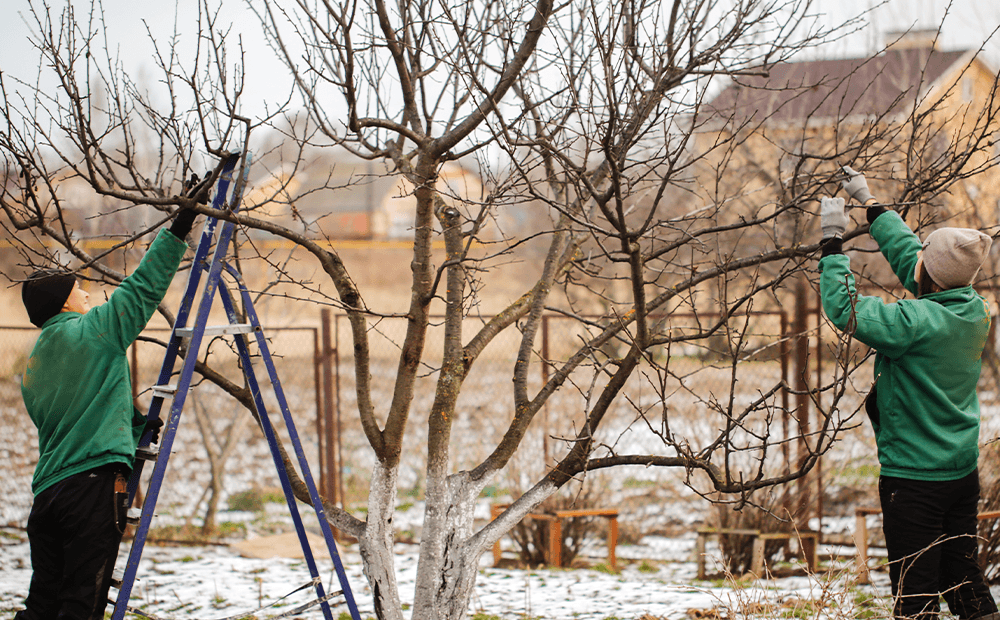WINTER PRUNING 101: WHEN TO START, WHAT TO CUT
Late winter, when everything is dormant, is an excellent time for pruning your deciduous trees and shrubs. Pruning in winter has quite a few benefits.
In winter, you can also easily see the complete structure of your tree’s crown, so it’s easier to decide what you should remove for a balanced shape. Healing time is also important for trees, and late winter gives them lots of time to heal over cuts before they start pushing out new growth in the spring—plus, there are no pests or fungal infections waiting to attack. Winter pruning can also encourage a big flush of new growth in the spring to rejuvenate your tree or shrub.
When to Start Pruning In Winter
When we talk about pruning trees in winter, we don’t mean to whip out those loppers and shears as soon as the snow flies. Generally, pruning for shape, rejuvenation, and removing deadwood, should be done in late winter. In Indiana, that guideline means starting your pruning in February and finishing up by early April.
The guideline about pruning in late winter or early spring is good to follow, but it’s not a strict rule. If you have a tree or shrub that gets damaged, whether it’s from a winter ice storm or that intense Derecho that went through the Midwest last summer, you should do the clean-up pruning as soon as possible. Your trees and shrubs will heal the best and get back to growing well if injuries are dealt with as soon as possible.
Damaged Limbs: If your tree or shrub has sustained damage in any way, remove damaged limbs as soon as possible. Tearing or breakage makes a tree more susceptible to pests, disease, and rot, so a clean cut will reduce stress and help improve the tree’s chances of recovery.
Diseased Limbs: Disease can sometimes be hard to spot. You’ll usually notice a difference in bark texture and color or abnormal growths on a diseased limb. You should cut diseased limbs well back from the diseased section. Sanitize your pruners before and after cutting diseased branches. Diseased sections should be bagged and thrown away with your trash or burned as soon as possible. Never compost diseased plant material.
Dead or Dying Limbs: If a limb is dead, or dying, cut it out. In winter, it can be hard to tell what’s dead. You can do the flex test or the scratch test. Try to bend a twig; if it flexes and bends, it’s still alive. If it easily cracks and snaps, it’s dead. On larger limbs, you can scrape back a tiny section of bark so you can see the layer underneath. If the underlayer is green or white and soft, it’s alive. If it’s brown and hard, it’s dead.
Give Pruning a Try This Winter
If you haven’t done it before, give pruning a try this winter. Winter pruning can help your trees produce more flowers and fruit, stay healthier, live longer, and improve curb appeal. Just remember this one last guideline: don’t remove more than 30% of a tree or shrub’s total volume in a single year.
If you need some pruning tools or want tailored advice about specific types of tree pruning, stop by for a chat with one of our staff at Dammann’s Garden Co.




